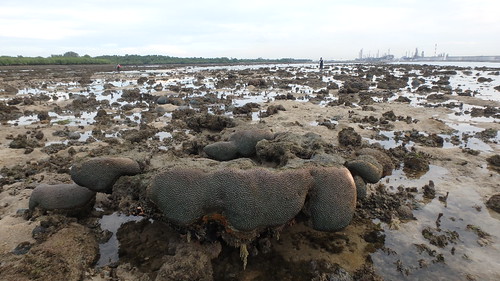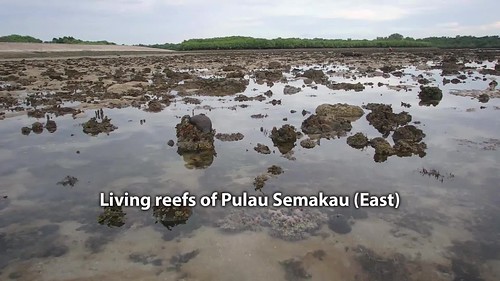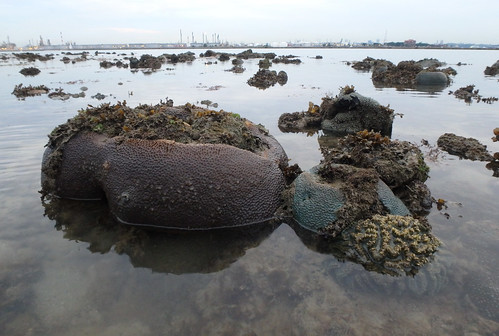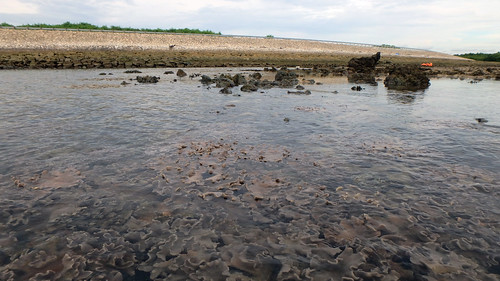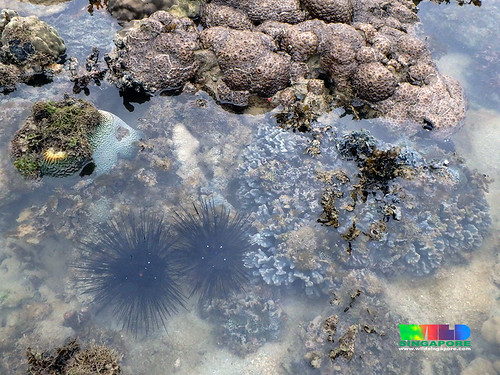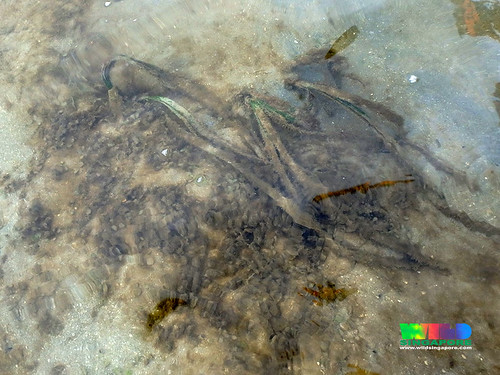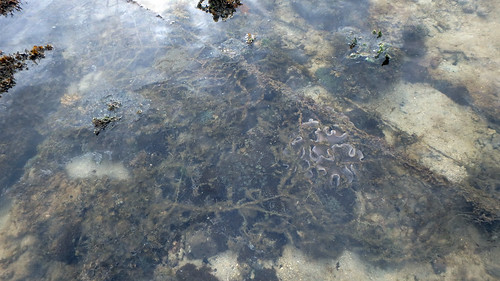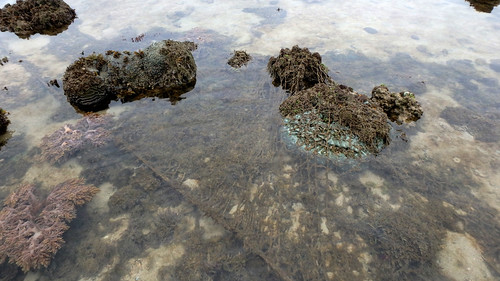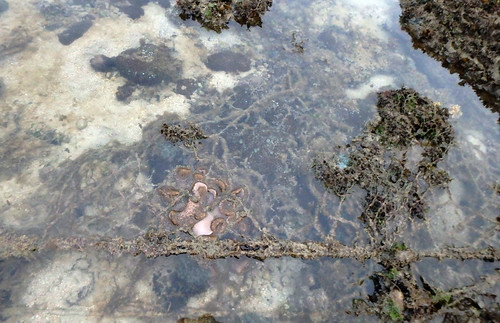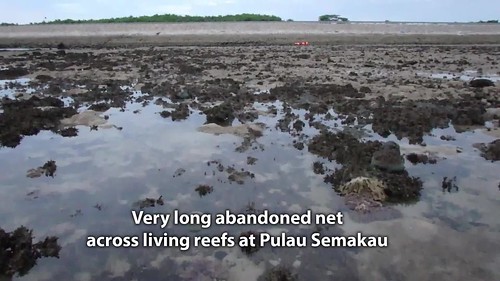It was a relief to see most corals were alright. The soft corals were particularly abundant, and zoanthids densely cover some parts of the shore. Sadly, we also came across a very long abandoned fishing net.
This is what the shore looked like in July 2016, at the height of mass coral bleaching. At that time, We estimated about 70% of the hard corals and 40% of the leathery soft corals are bleaching. We estimate 5-10% of the corals have died recently.
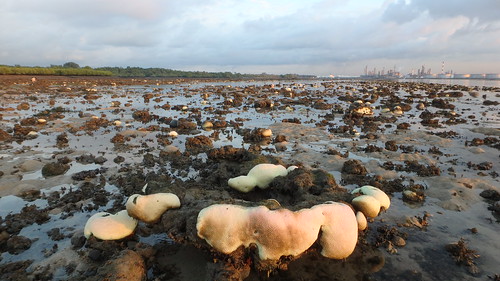 |
| In July 2016, there were bleaching corals as far as the eye could see. |
Many of the corals I saw looked alright.
Merulinid corals remain abundant. Some colonies has small dead patches, others had much larger dead patches. A few had small pale or yellow patches. I saw a few Boulder pore corals that were very pale.
I saw two Circular mushroom corals, they were not bleaching.
I came across a few small colonies of Acropora coral. Some were reddish, others were brown. One was half dead, but most of the others seemed alright.
I saw a few Cauliflower corals and some Branching montipora corals, they were alright.
I saw several small colonies of Anchor coral that were alright. Also some small Galaxy corals and a clump of Carnation coral.
I only saw a few Anemone corals and most seemed a little pale, or had large dead portions. I saw some Disk corals that seemed alright.
I saw several Brain corals. Most seemed alright although some had sprinkles of dead portions and some were pale.
Some parts of the shore was densely covered in leathery soft corals. As well as Asparagus flowery soft corals. None were bleaching, and most looked alright.
But I did see some small Omelette leathery soft corals that appear coated with a peeling 'skin'. A few of the Asparagus flowery soft corals were rather 'neon' coloured.
I saw a variety of leathery soft corals, as well as different kinds of flowery soft corals, and two Leathery sea fans.
There were a variety of zoanthids on the shore, covering some parts of the shore densely in a colourful carpet. There were also many clumps of Broad feathery soft corals.
I saw many dense clusters of Magnificent anemone, none of them bleaching, but none with anemonefishes. I saw several large Giant carpet anemones, all alright although one was rather yellowish, none with anemonefishes. There were two Haddon's carpet anemones on the sandy shore. I saw one Bubble tip anemone that was not bleaching, also couldn't see any anemonefishes. I saw one Fire anemone and a few Frilly sea anemones.
I saw several Diadema sea urchins. Dayna found a large Fluted giant clam.
There were a few Tape seagrass clumps many with cropped leaf blades. I only saw a few sprinkles of Spoon seagrass, heavily covered in epiphytes.
Sadly, we came across a very long abandoned net. It had entangled many soft corals, large sea anemones too. We estimate the net is about 200m long.
The net is snagged on large corals.
More views of the abandoned net.
Here's a video of the net. It stretched from the seawall of the Landfill to the reef edge.
Pulau Semakau is NOT the same as the Semakau Landfill. The Landfill was created by destroying all of Pulau Saking, and about half of the original Pulau Semakau by building a very long seawall. Fortunately, the landfill was constructed and is managed in such a way that the original mangroves, seagrass meadows and reefs on Pulau Semakau were allowed to remain. The eastern shore of Pulau Semakau is right next to the seawall of the Semakau Landfill, opposite the petrochemical plants on Pulau Bukom.

As the existing half of the Landfill was used up, the Phase 2 of the Landfill was just recently launched. This involved closing the gap of the seawall on the Semakau Landfill, forming one big pool where incinerated ash will be dumped. NEA worked to limit the damage to natural shores during the construction work for this expansion of the landfill.
The 2030 Landuse Plan by the Ministry of National Development released in Jan 2013 shows plans for 'possible future reclamation' (in light blue surrounded by dotted lines) that may impact the eastern shore of Pulau Semakau. More about the possible impact of the 2030 Landuse Plan on our shores.
 |
| Click on image for larger view. |
 |
| Click on image for larger view. |
Photos by others on this trip
- Dayna Cheah on facebook.
- Lim Yaohui on facebook.
- Tay Ywee Chieh on facebook.

